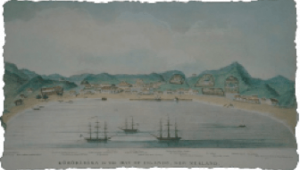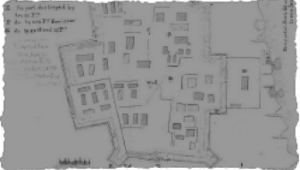
Evolution of
Māori Warfare



Many of the Māori warriors who faced the British soldiers in 1845 were battled hardened and experienced. They knew how to fight with muskets, and how to defend against an enemy with muskets. The Musket Wars gave rise to the gun fighter pā, which were further refined and used effectively against the British in the years that followed.
The origins of the sophisticated gun-fighter pa of the Northern War can be traced back to the Musket Wars period. Eighteenth-century Māori pā – elevated and exposed as they were – provided poor defence against an enemy armed with muskets. Māori were quick to realise this, and began to adapt their tactics according. Height was no longer an advantage. For a start the attackers could move to within firing distance without being seen, hidden from view by the curve at the crest of the ridge. Furthermore, it was difficult for the defenders to shoot downwards at a steep angle – they had to reach down with their upper body raised above the ditch and bank defences. The silhouettes of their bodies against the skyline were good targets for the enemies below.1
Musket warfare prompted Māori to shift their fortifications from the steep hills and precipitous ridges, down to the flats or onto broad gentle slopes. Trenches and gun-pits were built parallel to the old-style defensive ditches, and palisades were adjusted to become more effective. During the Musket Wars Māori learned the benefits of breastworks,2 and they also learned that defensive trenches should not be built in long straight lines. Enfilade or flanking fire down the length of a ditch could kill or injure many of the defenders at once. The solution was to build trenches with corners and projections.
Māori continued to adapt and develop their defensive strategies and tactics during the 1820s, 1830s and against the British soldiers in the 1840s. Ruapekapeka Pā was a culmination of everything Māori had learned in the previous decades. It was not a “revolution” in pā design. The changes evolutionary, as Māori quickly learned from experience what worked against an enemy armed with muskets.
See also Ruapekapeka Reconstructed
1 see Jones, K. 1994:88-94 for a details of this subject, including diagrams and images
2 breastworks are fortifications built to breast height, often temporary and quickly constructed, for example an earthen wall



